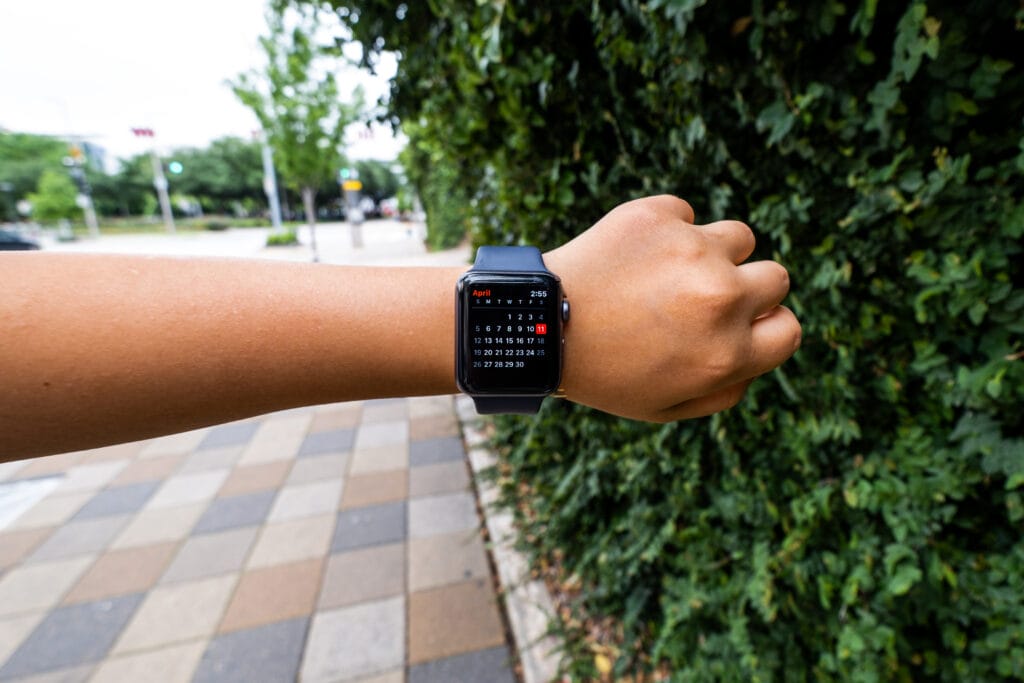Platform & Products
The hidden chaos of financial systems integration & implementation
Weak financial systems integration slows growth in markets where speed and confidence matter most. Integration chaos…
Read article

09/24/2020
by Scotty Buoy and Brendan Hopper

“Dad, have you seen this new mobile app? It looks like so much fun.”
“My phone can share my location with all my friends!”
“Did you know you could monitor your front door from your phone?”
These are just some examples of how mobile applications are changing our daily routines in a positive way.
Beyond personal usage, more and more companies are recognizing trends in mobile application development with a newer generation of users and how they want access to real-time data by leveraging their mobile devices. With this continued shift in both the workforce and in our personal lives, there are important considerations to keep in mind as you build and improve your mobility program.
Formalizing an enterprise mobility architecture is crucial to a successful mobility program. The architecture is a combination of the technologies and patterns that should be followed to build your enterprise mobile applications.
You might be asking yourself, “What if I know little about mobile apps or architecture?” Thankfully, we have a few thoughts to guide you:
Consider your device ecosystem – With an increasing number of companies adopting Bring Your Own Device (BYOD) policies, companies need to ensure that they account for the diverse set of device types and sizes in the marketplace. Building hybrid applications to minimize the dual effort of maintaining separate native Android and iOS applications will lead to time and cost savings. In addition, leveraging testing services such as device farms, which provide access to testing across an extensive range of real mobile devices, will prevent future compatibility issues from end users.
Leverage a mobile development platform – It is important to consider a Mobile Development Platform that can help streamline cross platform development. Platforms such as Kony or IBM MobileFirst provide a suite of features that enable application lifecycle management by simplifying development and providing standards for security, analytics, and backend integration management.
Emphasize security – Mobile applications are susceptible to high risk vulnerabilities; therefore, a strong emphasis needs to be placed on securing companies’ assets and data. Leveraging the security features available from a Mobile Development Platform can help protect backend systems from being compromised by utilizing token-based access and by serving as a secure middleware solution to access your enterprise systems. Additionally, companies should leverage the security features available from their Mobile Device Management (MDM) software such as:
Gathering the correct personnel to bring your mobile plan to life is not all that different from a non-mobile system development. You will need highly adaptable, driven team members with knowledge of technical implementation and the ability to connect with functional partners. Each role on the mobility team highlights a different skill set, but having versatile members will only help in closing gaps.
The final consideration in building your A-list mobility team is consistency, carried out in two predominant ways. First, think of the program as ONE team working together on different functionalities. Although the specialization of segmenting your team by application might seem appealing, it can hamper the growth of individuals and, more importantly, leave your team unprepared to provide adequate support if a large need arises. Second, the mobility program cannot flourish if it functions like a revolving door with resources in and resources out. As your program matures, you will need to rely on deeply ingrained members who understand the applications and use cases intimately. Too much efficiency is lost when constantly training new members on the team and no one person’s knowledge extends past a year.
In the world of mobile apps, success hinges on the fight for real estate. Your phone storage falls into a few categories; things you cannot live without, things you might need occasionally, or things you did not even know were on your phone. When developing quality mobile apps, both internally and externally, the primary goal is relevance. Put yourself in the user’s shoes. Will they use the application regularly? Does it provide value, or would it be the first thing they delete when they take too many pictures?
Something else that is often not considered, is the environment in which the end users will be using the mobile device. This consideration applies to all industries, but in the utility industry specifically, we have seen a myriad of complicated questions addressed upfront through UX solutions. Ensuring field workers with protective gloves can navigate an app by voice or saving data offline when a crew is performing work without cell service, just to name a few.
So how do we compete in the world of relevance where every user has between 60 and 90 apps on their phone and will accrue over 800 hours this year on mobile, primarily on social media and games? The answer can be broken down into achieving a couple of critical milestones.
Convenience – Before even attempting to download an app, the user will always ask themselves “how will this make my life easier or more enjoyable.” This is the first hurdle in the process of proving relevance. If your app cannot provide a solution to a common business or customer problem, the rest can be ignored. Ensure your applications tackle common on-the-go processes and show only data a user wants in a compact format. Trying to replicate a full system on mobile when the user is always by their computer just raises the question of “why.”
Simple yet secure distribution – If you can pass the first checkpoint of convincing users your applications are useful, getting them downloaded is next. For external applications, Apple and Google have easy to use app stores where your primary challenge is to ensure your app can be found. For internal applications, the difficulties abound. Striking a balance between security and usability is a must, which is why having a quality MDM is key. Since more than 67% of employees use their personal devices at work, regardless of the office’s official BYOD policy, companies can benefit from simplified MDM set ups. Without sacrificing the secure architecture referenced above, an elegant MDM solution that minimizes clicks will be the difference between a user seamlessly downloading an application or having their first experience with the mobility program involve troubleshooting help.
Intuitive user experience (UX) / user interface (UI) – With the word “user” in both UX and UI, the third milestone is pivotal in understanding retention. Now that the user has downloaded and entered your company’s mobile domain, your next step is to not immediately push them back out the door with poor usability. Unnecessary clicks, slow loading, confusing navigation, and no clear presentation of important information are just a handful of reasons why your business loses efficiency, or your customer loses interest. Instead, replace these mishaps with comprehensive onboarding walkthroughs, a constantly displayed quick access toolbar, and sleek visuals to keep your users uninhibited from accessing their information. Overall, having a dedicated design team involved will greatly reduce the end user head scratching.
Continued engagement – The last milestone centers around long term engagement. Users want to be heard and expect regular updates to their applications. If a user base feels consistently excluded from fixes and new features, their application use will dwindle and engagement with the program will drop. Mobility programs thrive when ideas are generated by a large eager user base that continually submits new ideas to be digested. Ensure you have feedback channels, idea intake forms, and reviews enabled for users to offer their insight on improvements. Monthly releases that introduce new features and fix issues will gain rapport among your workforce and customers alike. Keep in mind that the reviews your current users leave will often be the first thing prospective users build an impression from.
Hopefully, some of these thoughts can assist your program in keeping pace with the increasing demand for mobile functionality. Be on the lookout for additional posts discussing how leveraging innovative technologies can take your mobility program to the next level.
Business insights
Platform & Products
Weak financial systems integration slows growth in markets where speed and confidence matter most. Integration chaos…
Read article

Platform & Products
Learn how xTechs and large organizations form technology partnerships that allow both groups to continue to grow.
Read article

Platform & Products
At the risk of sounding dramatic, for the innovative financial services provider, if you’re not adapting, you’re…
Read article
